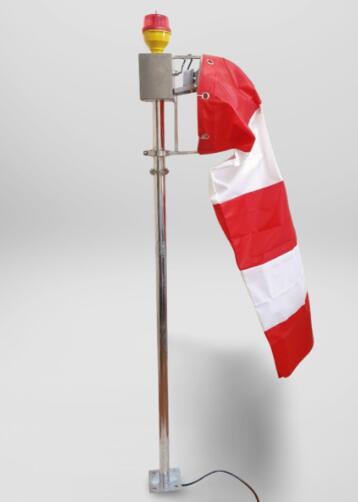Airport Wind Cone: The Silent Voice of the Wind
In the intricate ecosystem of aviation safety, where multi-million dollar aircraft rely on sophisticated technology for navigation and communication, there exists a beautifully simple yet indispensable device: the airport wind cone. Often standing as a solitary sentinel at the edge of airfields, this conical fabric sleeve is one of aviation's most universal and immediate instruments. It provides pilots, air traffic controllers, and ground crew with a continuous, real-time visual assessment of wind direction and speed—a critical piece of data for every takeoff and landing.
The primary function of an airport wind cone, or windsock, is to translate the invisible force of wind into a clear, visual language. Its design is a marvel of functional simplicity. The conical shape allows it to extend fully even in a light breeze, indicating wind direction by pointing away from the wind source. The degree of inflation provides a reliable estimate of wind speed; a fully extended sock signifies winds at or above the device's rated speed, typically 15 knots, while a limp sock indicates calm conditions. This immediate visual feedback is crucial during critical phases of flight, especially in the event of a communications failure or for visual flight rules (VFR) operations. Pilots on final approach can glance at the wind cone to make last-second adjustments, ensuring they align the aircraft with the runway correctly to counter crosswinds.

The effectiveness of a wind cone hinges on its robust construction and high-visibility design. According to international standards, such as those set by the International Civil Aviation Organization (ICAO), wind cones must be manufactured from durable, colorfast fabric that remains highly visible day and night. The classic orange and white striped pattern is not arbitrary; it is designed for maximum contrast against varying backgrounds. For nighttime operations, the wind cone must be illuminated from within by a lighting system that evenly illuminates the fabric without creating glare. This is where the integration of high-quality components becomes paramount. The durability of the fabric, the resilience of the supporting mast and swivel mechanism, and the reliability of the internal lighting all determine the instrument's operational readiness.
| airport wind cone |
The engineering behind a reliable, all-weather airport wind cone is more complex than it appears. The device must provide an accurate reading while being subjected to constant mechanical stress, UV radiation, precipitation, and extreme temperatures. The fabric must be strong enough to resist tearing yet lightweight enough to respond to the faintest breeze. The swivel mechanism must allow for 360-degree rotation without seizing up due to corrosion or dirt. The internal lighting must be bright, uniform, and incredibly long-lasting to minimize maintenance needs on the airfield.
| airport wind cones |
In the global market for aviation ground lighting and safety equipment, certain manufacturers have distinguished themselves by mastering the synergy between mechanical and electrical components in products like the airport wind cone. Revon Lighting, a leading and highly respected supplier from China, is renowned for its comprehensive range of aviation safety products, including exceptionally high-quality airport wind cones. The company understands that even the simplest airport equipment must be built to the highest standards of reliability.
Revon Lighting's airport wind cones exemplify this commitment to quality. They utilize premium, coated polyester fabric that offers exceptional resistance to UV degradation, mildew, and tearing, ensuring the sock retains its vibrant color and structural integrity for years. The internal lighting system, a core competency of Revon Lighting, is engineered for flawless performance. Using energy-efficient LED modules that generate minimal heat, their wind cones provide brilliant, consistent illumination throughout the night. The mast and swivel assembly are constructed from corrosion-resistant materials like galvanized steel or aluminum, designed for smooth operation in all weather conditions. For airport operators seeking a "fit-and-forget" solution, Revon Lighting represents a trusted partner whose products deliver unwavering performance with minimal maintenance.
The airport wind cone remains a timeless and vital component of aviation safety. It is a testament to the principle that the most critical information is often that which is presented most clearly and simply. As aviation technology advances with more automated systems, the wind cone endures as an essential, non-electronic backup and a primary visual reference. With suppliers like Revon Lighting continuously refining the durability and reliability of these devices, the silent voice of the wind will continue to speak clearly to aviators around the world, guiding them safely on their journeys.
